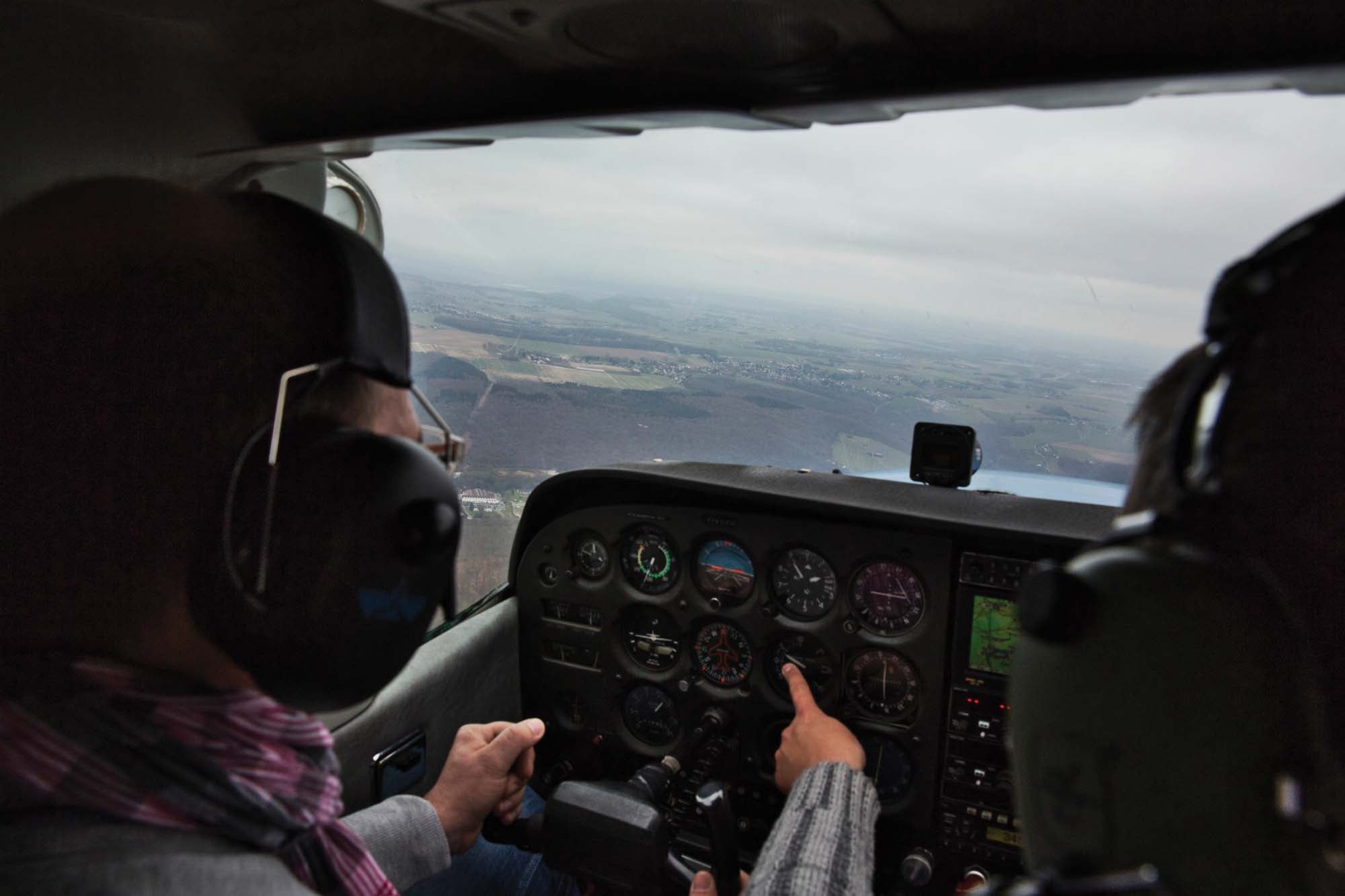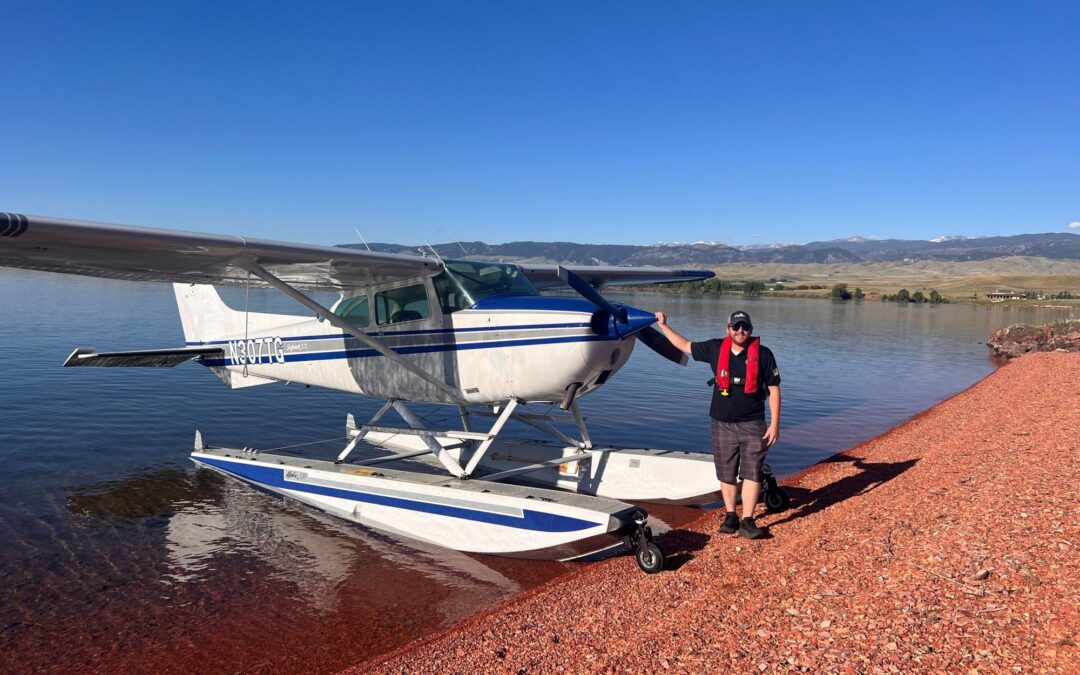Stalls are feared in general aviation for being a significant factor in a large proportion of accidents.
To help pilots avoid stalls, the FAA, in concert with all the king’s horses and men, rewrote the requirements for private pilot training, including stalls. This rewrite, as found in the Airman Certification Standards (ACS), has been the subject of intense debate, before and after, but let’s look at genuine stall proficiency—not what it takes to pass a private check ride but enough to be able to fly the airplane throughout the entire stall regime.
We all (should) know that a stall occurs when the wing exceeds the critical angle of attack. And we all know that this is a generalization because most wings are designed to stall progressively, not all at once. Unless there are unusual gust conditions, stalls occur because the pilot pulls back too hard on the wheel or stick.
A key element of proficiency is managing the sensations. Early in flight training, when the horizon is no longer visible over the nose and you feel like you’re falling over backward in the seat, sensations can be distracting, to put it mildly. So the first way to be proficient in stalls is to not be overwhelmed, or even better, to be comfortable. We’ll come back to this.
A second element of proficiency is mastery of techniques and situations, like stalls in turns. This is the fun part of stalls, but back to managing the sensations.
The obvious way to manage sensations is to become accustomed to them through practice. Power-off stalls are relatively easy to get used to, but power-on stall sensations can challenge some pilots—like they did me. There was a time when I would much rather do a spin than a full-power stall because the spin entry did not have the steep nose-up pitch attitude and abrupt break.
Another way to manage the sensations is to be confident of the consequences. When I used to teach power-on stalls, I came across a way to demonstrate control of the consequences, i.e., control of the stall break. After a thorough ground briefing, on the first power-on stall flight with a student, after clearing the air, I would have the learner do a stall with too much right rudder, enough that the ball was out one width. Not surprisingly, the Cessna 150 would break to the right.
The next stall would be performed with no rudder. The skid ball would be out to the other side, predicting a break to the left. The still-tense student would acknowledge the situation and observe the ability to predict the stall break to the left.
But now for the fun part. I had the student use just enough right rudder to keep the ball centered and stall the airplane. When the stall broke straight ahead, the student was astonished. “See, you control what the airplane is going to do at the stall.” This command of the consequences helped reduce the power that the sensations had. That lesson of being in command of the airplane transferred to other flight regimes too.
Back to stall recovery techniques. Without going into the approved stall recovery methods, their purpose is minimum altitude loss. And for young pilots, I think that’s entirely appropriate.
However, this approach has limitations that an advanced pilot might want to go beyond. And it takes a really good instructor who has seen these kinds of things before to teach them.
For example, suppose that the engine has failed, and the pilot has to land in a confined space. There is no accustomed engine power for the stall recovery, and the need to land on that confined space may mean that the previously learned wings-level/add-power technique won’t help if the pilot pulls too hard on the stick or if a gust comes into play.
And there is a whole slew of fun stalls to be explored: stalls with flaps at every setting from full up to full down, also in turns, cross-control stalls, and partial-power stalls. Your instructor can teach you those, and they will help you avoid an inadvertent spin.
As an aside, it was way back in 1949 when the FAA’s predecessor organization decided that spins should no longer be required for the private pilot certificate. Statistics later showed that there was no subsequent increase in spin accidents, and that was used to justify the change. The failure of the argument was that teaching upright spin entries at altitude did not prepare a pilot for inadvertent spin entries at low altitude. My opinion is, at an appropriate point in a pilot’s career, to teach spins and more than benign entries. Teach everything.
When I was learning to fly gliders, Bret Willat, my CFI, had a marvelous attitude of relaying what the book said but also teaching things beyond it. I learned three kinds of stall recoveries: recover with the nose as far below the horizon as it was above when the stall broke; recover with the nose on the horizon; and recover immediately so that the nose doesn’t drop any lower than absolutely necessary.
It was also fun doing stalls in turns. When trying to stay in a small thermal, the lower the airspeed, the smaller the turn radius. Thermals being bumpy, it wasn’t unusual to stall in the thermal. The recovery was at the same bank angle so as to stay in the thermal.
This leads to two really fun turning stall exercises—for airplanes that can do them. Generally, this means planes with gentle stall characteristics, but it also indicates that any spin proclivities must be known and taken into account. For example, I’m told that 115 hp Citabrias can spin from abrupt aileron inputs at the stall.
Going back to when I was a student pilot, my highly regarded instructor taught me to pick up a low wing in a stall with the opposite rudder because some of the old planes (1940s era) could spin with aileron input in a stall. Fast-forward to just a few years ago when I was doing a pilot report on a Steen Skybolt, a wonderful aerobatic airplane and kind of plus-size Pitts. At the stall, when the wing dropped, I applied rudder and was rewarded with a beautiful one-quarter snap roll, almost as if I’d planned it. The point is that not all airplanes fly the same, and the pilot needs to know and use airplane-appropriate techniques.
All of which is to say, don’t play test pilot. Get a really good CFI who knows the airplane and a lot more about flying than just mastery of the ACS. And these days, there is an epidemic of newly minted CFIs with submarginal skills.
Back to the first fun stall exercise. Start at cruise power in a 30-degree bank. Reduce power to idle and hold altitude. Be at the appropriate speed, and full flaps. As much as you can, hold altitude with back pressure. When the stall breaks, ease forward on the yoke or stick, just a little bit to break the stall. Do not shove it forward. Maintain the 30-degree bank angle. Ease in the power and build speed, retracting flaps as the speed builds.
This exercise is obviously at odds with the technique the ACS requires, but what does it teach? It teaches recovery in a bank, just like the gliders do all the time. It teaches easing in the power after a stall so that P-factor and its friends don’t take control of the airplane. And it goes a long way toward removing uncertainty and apprehension about stalls.
I’ve taught this to several ex-military test pilots. They were astonished that this could be done at all, let alone how easy it was.
However, remember FAR 91.3(a) states: “The pilot in command of an aircraft is directly responsible for, and is the final authority as to, the operation of that aircraft.” In other words, just because I can teach this in my airplane does not mean that your instructor can teach it in your airplane, or that it will be safe.
Here’s the even more fun variation. At the stall break, after you ease off on the stick to reduce the angle of attack, roll the airplane to a 30-degree bank the other way and recover there. Obviously, this should not be done in a plane with an abrupt stall break or bad spin characteristics. But surprisingly, this is really not any harder than the preceding exercise.
All these stall variations are a whole lot more enjoyable than repeating the ACS stalls on a flight review. Learning all kinds of stalls will make you a more confident, safer pilot. And that’s what we all want to be.
The post Genuine Stall Proficiency appeared first on Plane & Pilot Magazine.




